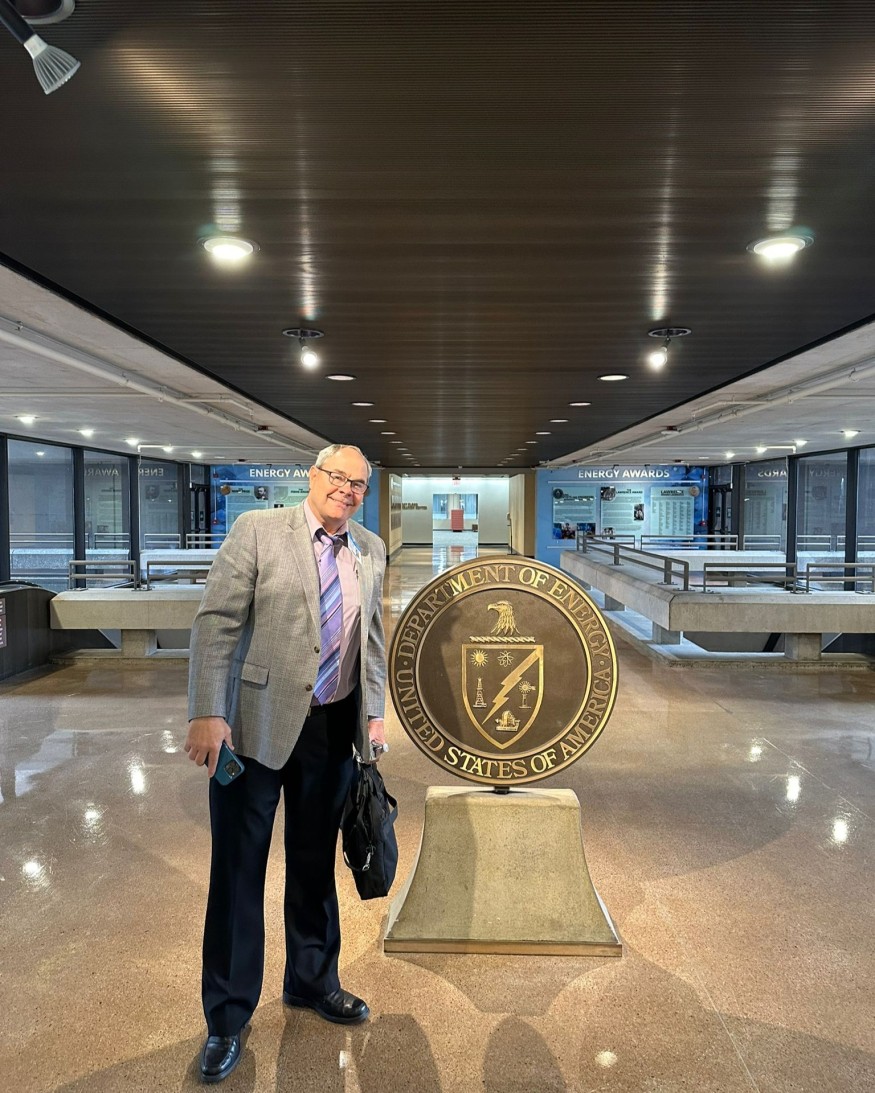The fact that the United States is facing an energy crisis is not news. Despite the ever-increasing demand for power, energy companies and world leaders alike are striving to create efficient solutions that reduce environmental damage. Nuclear energy company LIS Technologies is pioneering the quest for safe, sustainable nuclear power.
U.S. officials also seem to be of the mind that nuclear power is the way forward. LIS Technologies is one of only a handful of companies to be awarded one of the recent Department of Energy (DOE) Low-Enriched Uranium (LEU) Enrichment Acquisition Program contracts.
The contracts were offered to incentivize the development of LEU—an essential component of fuel for nuclear reactors—within the U.S. In 2024, the Prohibiting Uranium Imports Act led to a ban on Russian uranium, largely due to increasing national security concerns.
Prior to the ban, the U.S. had relied almost entirely on Russian-enriched uranium to power nuclear reactors. "Now, there's a bottleneck; the U.S. doesn't know where to get HALEU (high-assay low-enriched uranium), and none of these small modular reactor or microreactor companies know where they're going to get their fuel," says Jay Yu, President and Chairman of LIS Technologies. "So we're building these billion-dollar reactors, and we don't even have the fuel for them."
LIS Technologies has risen to the challenge—and it's hard to imagine a company better equipped to do so. Cofounder Dr. Jeff Eerkens innovated the Condensation Repression Isotope Separation by Laser Activation (CRISLA) process of uranium enrichment.
"When the iron curtain over the Soviet Union came down, Russia needed to boost their economy," explains LIS Technologies cofounder Christo Liebenberg. "They started flooding the market with enriched uranium, and they sold it for less than half price compared to what it was. That sunk many, many technologies. That's why CRISLA was stopped in 1993. It also destroyed the front-end nuclear fuel supply chain within the U.S. nuclear industry."

Liebenberg, a laser scientist who has long worked with the laser enrichment processes, joined forces with Eerkens in 2013, founded CRISLA, Inc. in 2020, and LIS Technologies in 2023. The latter company is now in the process of bringing the CRISLA process back to life and optimizing it to eventually create an efficient, scalable source of enriched uranium.
This is good news for the country's revival of nuclear energy. However, it creates certain security concerns.
In its natural state, uranium cannot power nuclear reactors (except for CANDU reactors) or be used to make nuclear weapons. Uranium enrichment increases the concentration of the U-235isotope. The percentage of U-235 present determines how effective uranium will be as nuclear fuel. Low-enriched uranium (LEU) is a less-concentrated fuel (3.5–5%) used in older reactors, but newer, advanced reactors (including SMRs and microreactors) often require high-assay low-enriched uranium (HALEU), enriched to a maximum of 19.75%.
"We're only going up to HALEU," Yu says. "So we'll do LEU, which is up to 5%, and then we'll go to HALEU, which is up to 20%. We're not looking to go beyond 20% because that's weapons-grade. We're doing this for peaceful use only."
The U.S. government will likely classify the company's enrichment process in the very near future. If the technology is ultimately classified, it will be for good reason.
"A real concern about the technology is proliferation," says Liebenberg. "Proliferation is when you can use a technology for two purposes. You can enrich uranium for peaceful purposes or convert that peaceful application into a not-so-peaceful application, right?"
"Our intentions are definitely to do this only for peaceful applications," he continues. "If this technology comes out, a foreign actor might decide, 'Okay, these guys are making very good progress.' They might use that technology for not-so-peaceful purposes. So that's why it will have to be protected."
Why haven't U.S. officials already moved to classify the technology? First and foremost, the LIS Technologies team will need to demonstrate that their process is as effective as they claim.
"After we show that we can rebirth this technology and show the U.S. government that we can enrich uranium at 'practical quantities' in a single stage, they'll come down and basically put security measures around us," Yu explains. "Our technology and our patent will be removed from the public domain and then be classified. All additional development work will be considered a trade secret."
Given the company's DOE contract, that classification will likely happen sooner rather than later. "We are being proactive, currently converting our building in Oak Ridge, TN, into a secret RD facility, and in the process applying for Q-clearances for all our technical staff and leadership team," says Liebenberg. With the revamped CRISLA process safely shielded from bad actors, LIS Technologies believes it will be able to confidently move forward and propel the United States toward a new era of safe, clean, and sustainable nuclear energy.












